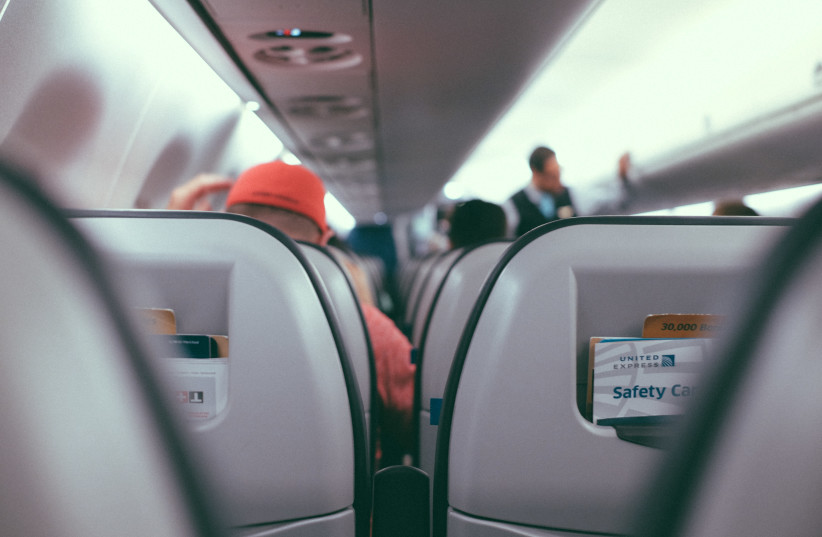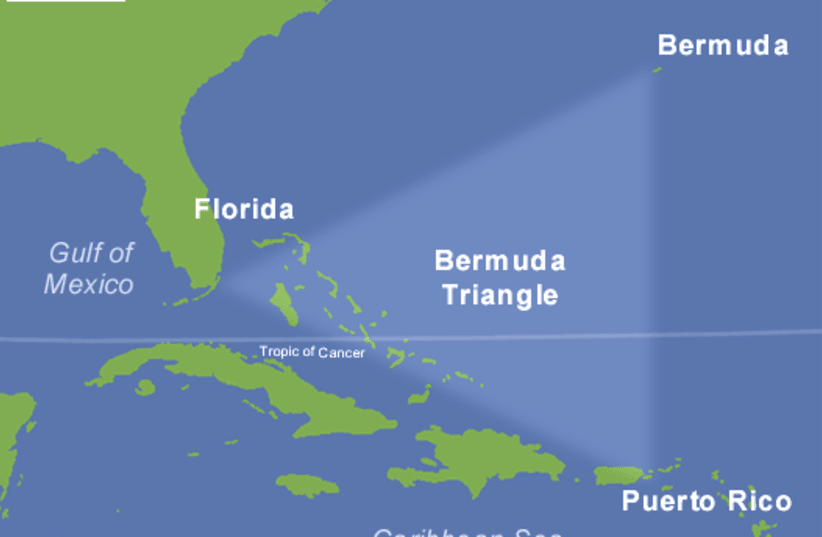Many ships and planes have disappeared without a trace within the infamous and mythical Bermuda Triangle, an area bounded by Miami, Bermuda, and Puerto Rico. What has caused these disappearances remains a mystery - but another mystery is what is behind the sudden drop in reports of disappearances.
At the end of the 20th century, we would repeatedly hear about the mystery of the Bermuda Triangle - an area in the Atlantic Ocean that has historically been known for swallowing ships and planes as if they were snacks.
But over the past few years, new questions have begun to arise, first of all - what happened to the Bermuda Triangle mystery? What is behind the sudden drop in interest in what is happening there? Did the disappearances suddenly stop? Well, maybe it has to do with the fact that the "mystery" has been solved time and again and that there was no mystery in the first place. But for those who need a little mystery to spice things up, let's go back to the beginning.
The interest in the area that extends over an area of 1.5 million square kilometers in the ocean waters can be attributed to an article published in 1968 about "Flight 19." On December 5, 1945, five American torpedo bombers disappeared over the Bermuda Triangle, in average weather conditions and under the control of several experienced pilots, as well as inexperienced pilots in training.
At around 4 p.m., a radio message passed between one trainee and his instructor, saying that they were not sure of their position and that the plane's compass was out of order. Shortly afterward, the planes were lost somewhere east of Florida and were never seen again. The disaster intensified when a rescue plane, sent to search for the lost flight, was also lost. The fate of the 14 bomber crew and the 13 crew members of the rescue plane remains unknown to this day.


As intriguing as the article was, planes disappear all the time for all kinds of reasons. In this case, Navy investigators theorized that after losing direction the crew was likely forced to make an emergency landing in rough seas and crashed.
"It is also possible that an unexpected development of weather conditions intervened," they wrote in the report, "although there is no evidence of unusual storms in the area at the time."
It is believed that their planes ran out of fuel, while the rescue plane exploded in mid-air due to a technical fault.
However, something about the idea of an area where things get lost caught on, and sinkings of ships and planes that disappeared were attributed to the area over the years. Sinkings that occurred before 1945 were also attributed to the Triangle in retrospect, including the loss of a ship, the freighter USS Cyclops, which disappeared with 366 people on board on its way home from Brazil in 1918.
Following the accidents, which according to some claims resulted in about a thousand deaths, rumors spread claiming that there is a mysterious force in the area that causes the disappearance of vessels and aircraft passing through it. Among the pseudo-scientific explanations offered for the so-called "mystery" of the Bermuda Triangle were an unknown magnetic field attracting metals to the sea, extraterrestrials residing in the area, or simulated time warps.
But the US Coast Guard compiled a document with several possible rational explanations for the disappearance of vessels and planes in the area.
"Most of the disappearances can be attributed to the unique environmental characteristics of the area," they wrote. "First, the 'Devil's Triangle' is one of the two places on Earth where a magnetic compass points in the direction of geographic true north - when it usually points in the direction of magnetic north. The difference between the two is known as compass variation. The difference between them varies up to 20 degrees when a person orbits the Earth. If the change or error of this compass is not compensated for and calculated, a navigator may find himself far from the originally planned course and in serious trouble."
They noted that there is another area known as the "Devil's Sea" by fishermen, just off the east coast of Japan, where the same problem exists.
"Another environmental factor is the nature of the Gulf Stream," they continued. "It is extremely fast and furious and can quickly erase any evidence of a disaster that has happened," quickly turning a tragic loss of a ship into a mystery that may never be solved. "Unpredictable Caribbean-Atlantic weather also plays its part - sudden local thunderstorms and choppy waters often become a source of disaster for pilots and sailors."
So, what's the truth about the infamous Bermuda Triangle?
All of the above is irrelevant since you cannot argue with numbers - and it turns out that statistically, there are no more accidents in the Bermuda Triangle compared to other areas in the oceans and seas. In fact, a study that examined the most dangerous waters for ships by documenting accidents and incidents did not feature the Bermuda Triangle in its top 10 places.
In fact, the place where most ships sink is the Coral Triangle, an area of coral reefs with a triangle-like area, located at the western edge of the ocean waters of the Pacific, around part of the islands of Southeast Asia. The area of this maritime area is about 6 million square kilometers, and it is found among the countries included in this area, which are Indonesia, Malaysia, Papua New Guinea, the Philippines, the Solomon Islands, and East Timor.
At the same time, a British Channel 4 documentary that examined incidents around the Bermuda Triangle stated that "a large number of ships that were claimed to have sunk in the area - did not sink there at all," and the US Coast Guard also agrees. On its official website, it is stated that "the Coast Guard does not consider the Bermuda Triangle to be a dangerous geographical area for ships or planes. In an examination of all the tools that were lost over the years, no evidence was found that the reasons were other than physical reasons. No unusual factors were involved."
The belief that there are more drownings and crashes in the area probably comes from the media (and conspiracy theory enthusiasts) who focused on and reported every drowning that occurred in the area, because of the interest surrounding the Bermuda Triangle - which strengthened the "mystery". In reality, there are no more accidents in this area than in other areas where ships and planes pass. Considering that this area is one of the busiest shipping lanes in the world, the relative amount of loss there is no greater than anywhere else.
In addition, the number of disappearances is inflated due to careless investigative work, such as in cases where the disappearance of a ship was reported in the press, but its finding and return to port were not reported.
So why is there suddenly less concern about the Bermuda Triangle and no longer reporting on the disappearances of ships or planes that actually do occur there?
Researchers say that this has probably happened because of the number of shows, documentaries, and articles about the mystery that have been produced in the last few decades. It is estimated that most of the public already knows that the "Bermuda Triangle Mystery" is not really a real thing and that the number of flights that disappeared in the Bermuda Triangle is the same as anywhere else in the world.
